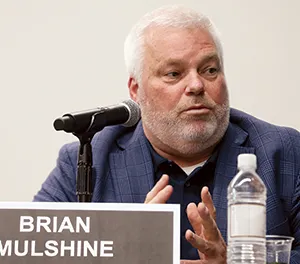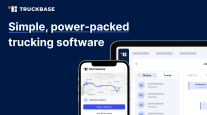Staff Reporter
Trucking Stakeholders Rally for Better Asset Management Data

[Stay on top of transportation news: Get TTNews in your inbox.]
NEW ORLEANS — Trucking maintenance stakeholders called for better methods to organize asset management data during the 2024 Technology & Maintenance Council Annual Meeting and Transportation Technology Exhibition on March 6.
The technical session “So You Have a New Truck — Now What? Data-Driven Asset Management” included a panel of experts who discussed the importance of proper data management for trucks, and efforts to improve processes.
“The goal of today’s presentation is to discuss data-driven asset management and think about return on investment in controlling, harnessing and driving your data through systems,” said Matt Farcosky, vice president of operations at Fleetpro. “Some of us are from larger companies that have data science teams and have the capabilities to move very quickly in this and spend a lot of resources on it. But some people are from smaller operations.”
Farcosky added that better leveraging of data will involve setting up tools and a process map to better organize maintenance data throughout the life cycle of a truck, including onboarding. It also means better controlling data through different systems. He noted that an important aspect of that is allowing components to communicate with application programming interfaces (API).

Mulshine says the industry needs to work together to create standards to help facilitate better data processes across platforms. (John Sommers II for Transport Topics)
“With fleet management systems and APIs, really it’s just about the whole ecosystem,” said Brian Mulshine, senior director of maintenance and product management at Trimble Transportation. “Today there’s so much data on vehicles. We need to do a better job as an industry trying to help each other. From the fleet management systems out there, from the vehicle manufacturers and then the customers. Pulling together engine manufacturers as well.”
Mulshine added the time and labor fleet operators must go through to organize data can influence its accuracy. He believes the industry needs to work together to create standards to help facilitate better data processes across platforms. TMC has tackled this issue a few ways including its (S.5) Health Ready Component Standards task force.
“The health-ready component standards takes the [Society of Automotive Engineers] fault codes that come from engines,” Farcosky said. “What the HRCS [recommended practices] is going to do is create a mapping file that takes those SAE codes and puts them directly one-to-one to a VMRS code. So, the team has spent 2½ years developing this mapping file, and it coincides with what health-ready component standards do.”
Farcosky added that this approach leverages the ability of certain vehicle components to issue their own data. But that further reinforces the importance of better organizing data with some processes, like onboarding equipment, not being well defined even as companies buy multiple pieces of equipment at the same time.
Meghann Erhart of Relay Payments shares ways to prevent falling prey to fuel card skimming. Tune in above or by going to RoadSigns.ttnews.com.
“We have three different teams that end up participating,” said Tom Chisholm, director of maintenance at U.S. Xpress. “Unfortunately, one of the struggles is, we rely on manual entry. If someone doesn’t know what the data point is, or doesn’t scroll through, then we get a 999 [error code], or we get a blank.”
Mulshine noted managing data can be frustrating for his customers since often they have to fill out close to 200 different unique fields to organize information about a vehicle. But he stressed there is a need for that asset information in order to know what to dispatch.
“This has to be fixed,” Mulshine said. “How many different systems, four or five, that you have to enter that asset. But then you probably don’t do a great job decommissioning. That’s been a challenge, I think, for everybody in the room and we’ve got to work together to drive change.”
Mulshine added there are many opportunities on the maintenance side to improve data because all OEMs offer an API. But he also noted that a lot of times the back ends of carriers are not properly connected, or their information technology department can’t handle multiple sources of data from vendors that are automated.
Want more news? Listen to today's daily briefing above or go here for more info
“Some manufacturers have said we have our own system, fleets will use our system to track it,” Mulshine said. “Fleets want to use their own native application. They want to use their own fleet management system for compliance across their whole fleet. So, it’s all about getting the data. This RP is standardizing [it].”
TMC has also been working to get more granular with its identification of components and processes. That includes a new VMRS code that was recently validated and approved that is focused on oil changes and valve latch adjustments. It was designed to work with existing codes to identify whether the maintenance work is due soon, past due or it has been performed.






